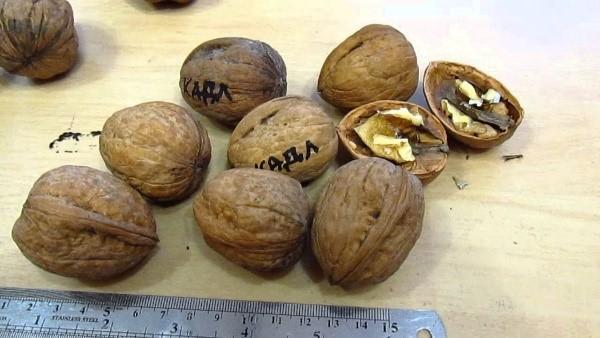Plant a Kadlubitsky nut
 There are nuts in almost every area, because they give us tasty and healthy fruits. And if you want them to be large and easily split, plant the Kadlubitsky walnut. It is a good variety, both in terms of yield and overall development. It is not too tall, which allows you to find space for at least one instance. It winters well even in the central zone of our homeland. True, it will not please you with early fruiting, but this is not the most important thing, because the nuts are very large, with a large oily kernel and a thin shell. What is this culture and how to grow it?
There are nuts in almost every area, because they give us tasty and healthy fruits. And if you want them to be large and easily split, plant the Kadlubitsky walnut. It is a good variety, both in terms of yield and overall development. It is not too tall, which allows you to find space for at least one instance. It winters well even in the central zone of our homeland. True, it will not please you with early fruiting, but this is not the most important thing, because the nuts are very large, with a large oily kernel and a thin shell. What is this culture and how to grow it?
Description of the variety
The tree is medium-sized; in adulthood it does not exceed 10 m in height. But it has a spreading crown up to 8 m in diameter. Flowering occurs in early May, mainly at the tops of the shoots.
The yield of the variety is average (35 kg per adult tree), but it belongs to large-fruited nuts with a lot of advantages:
- the mass of one nut of a slightly elongated shape reaches 17 g;
- fruit length - up to 5 cm;
- the shell is thin, easily cracked, without damaging the kernel;
- the kernel itself is beautiful, light, completely filling the inside of the fruit, and makes up 60% of the total mass of the nut.
Nuts are well stored until spring, and the kernels remain the same light, do not darken or dry out.
Fruiting occurs at the 6th year of life. Harvesting takes place in mid-September. Kablubitsky walnut has high winter hardiness. It survives winter with frost-30 ° without serious damage, and is also resistant to spring frosts.
Walnut Kadlubitsky: cultivation features
The nut should be planted in a well-lit place, he does not like the shade. The soil is preferably fertile, and the clay soil must be diluted with sand and compost.
The variety reproduces well by seed. When planting fruits, young plants retain varietal characteristics. It is better to plant fresh fruits in the harvest year, in late autumn. Between seedlings, it is necessary to leave at least 10 cm. And between rows - from 50 cm. The seedling is transplanted to a permanent place after two years.
You can also get a varietal seedling by vaccinations... It is better to do it on an already growing seedling from 2 years old, without transplanting it. Such a plant is stronger, which contributes to the high survival rate of the scion.
If the stock has been transplanted, the vaccination should be done only the next year after transplanting.
The fact that the vaccination was carried out in a hurry can be judged by the young shoots that appeared above the vaccination site. It is necessary to leave the strongest, and cut the rest. The shoots that appear below the vaccination indicate that this is a wild game, that is, the scion has not taken root.